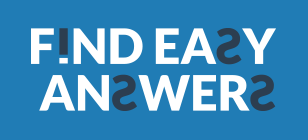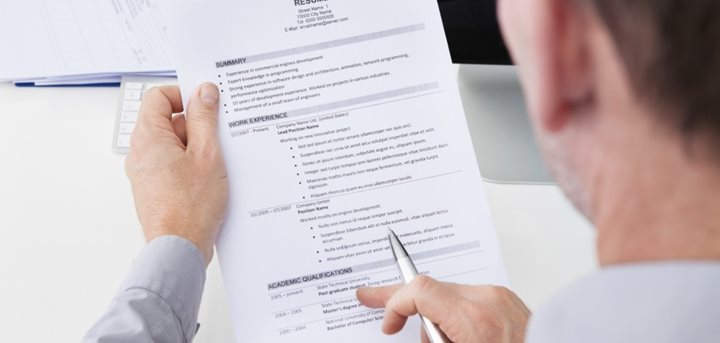We all know how important it is to ensure that the final draft of your resume is perfect. This is an area that can’t afford to be overlooked by anyone. Believe it or not, it is not uncommon to find several mistakes while proofreading your resume the first time.
After you have reviewed the document several times it starts to blur and you might miss something obvious. Nevertheless, even a single misspelled word or grammatical error can cost you a lot in an interview. Perfection is the ultimate goal when it comes to writing a resume. Below is a complete guide on how to proofread your resume to perfection.
Having someone else checking your resume as well as your cover letter for you is a good way of making sure that everything is perfect. However, before you decide to do that, here is a checklist that you should follow on your own:
Proofreading Your Resume for Grammar and Spelling
The most egregious mistakes in writing a resume are probably made in these 2 areas. The following is a guideline to ensure that you’re delivering an error free document:
Use a dictionary or thesaurus as you write. If you’re not certain about how something is correctly spelled, just look it up so as to avoid any spelling errors.
Be careful of tenses used on the resume. Your present experience ought to be in the present tense. In case you are using a combination bullet/paragraph format then the paragraph portion of your current role should also be in the present tense. All bullets should be made in the past tense.
Ensure that you Capitalize all the Proper Nouns
Make sure that you write dates and numbers in a consistent manner. The numbers from one to nine ought to be spelled out while 10 and above must be written in the numeric format.
Using Punctuation in your Resume
Punctuation is yet another area where most people make lots of errors. All punctuation on your resume should be consistent throughout.
Whether you decide to use or not to use periods at the end of the bullets within the resume isn’t a big issue. The main issue is that you keep these things consistent all through the document. Consistency is key.
When writing quotes, the punctuation should go inside the quote and not outside.
Resume Design and Layout
If you think that the layout and design of your document isn’t that important, you’re wrong.
Don’t use a tiny font which people cannot read without using a magnifying glass.
In case you have enough relevant and compelling content to fill 2 pages, just go for it. There’s no law on the books that dictates how long your resume should be. It should be long enough to cover your work history but short enough to remain interesting.
Do not over use underline, bold, italics or other features that will make the resume distracting.
For the physical copies, you ought to use high quality bond or linen paper in white or cream. The resume and cover letter should also be printed on a similar paper.
Not only does a resume show your career summed up on a single page but it is also your ticket to the next awesome opportunity. Therefore, it is kind of a big deal. With that in mind, it is a good idea for you to have an extra set of eyes look over the resume so as to make sure it is in a tip-top shape before you give it to anyone.
The question then is not how long should you have someone else looking over it but what should that person be looking for? Definitely typos, but that is not all. Here are 3 other questions that you should ask your resume reviewer so as to make sure you are getting the best possible feedback.
- What Type of Position Does it Look Like I am Applying For?
When the resume finally gets in front of the hiring manager, you never wish his/her first question to be, “Why exactly did the person apply?” You may be capable of seeing how all your different experiences connect in making you an ideal candidate for that job, but that isn’t always obvious on paper.
Having the reviewer make an attempt at guessing the kind of position that you may be going for will give you pretty good ideas about the type of roles that you seem qualified for. If the answers that you get are off the mark, then consider tailoring your resume more to that particular position.
- At What Point Did You Begin Skimming?
Did you know that recruiters do not spend more than 6 seconds on any resume. Of course, when you have asked your friend to look over the materials, he/she will spend a little more time. That said, there will still be a certain point when the friend will get that urge to skim.
Do not be offended. As a matter of fact, you should be grateful. In will allow you to pinpoint the spot where your resume stops being interesting, that is exceptionally great information to have whenever it comes to editing it. Consider rearranging the sections a little bit to be more engaging or make sure that your bullets impress in the most possible way.
- Do You Have Any Type of Questions After Reading The Resume?
This is quite similar to the very first question. However, instead of having to focus on the bigger picture, here you are dealing with details. Ideally, the resume usually checks off several boxes. The exact opposite of this would be generating several questions.
This does not mean that it should not generate any questions. They just have to be the correct kind. If they are more along the line of “Tell me more,” then that is fine. The problematic ones usually imply confusion. In case your reader cannot understand what you are trying to say or he/she is wondering why something has been included, then consider it a red flag for editing.
You may think that the next step is to sit down and then take time to revise the entire thing. However, in reality, the next step should be writing the thank you note for that lovely resume-reviewing friend of yours!
Featured Image Source: Thinkstock/AndreyPopov







